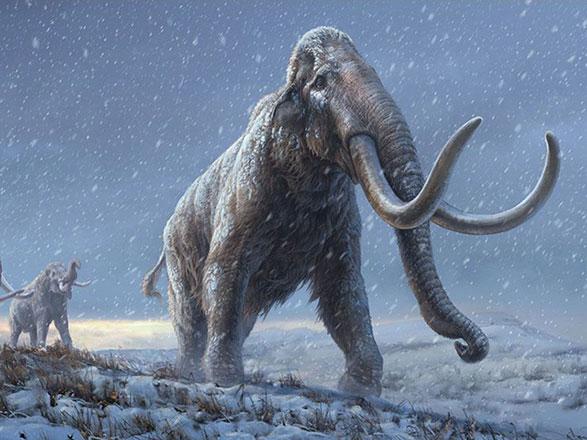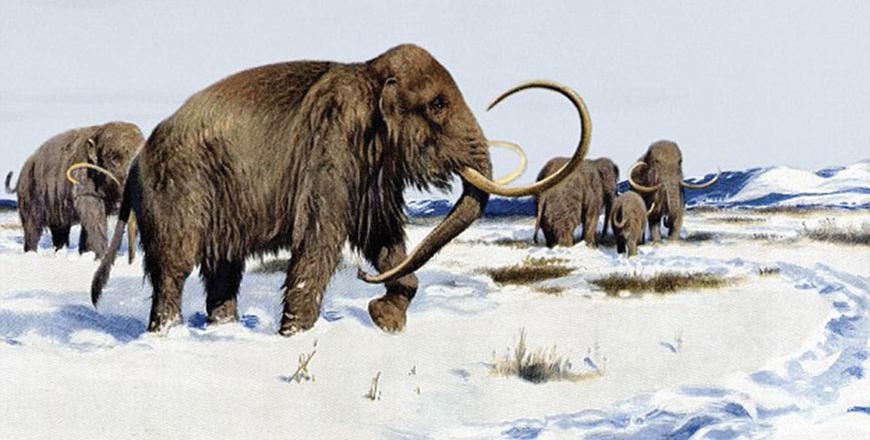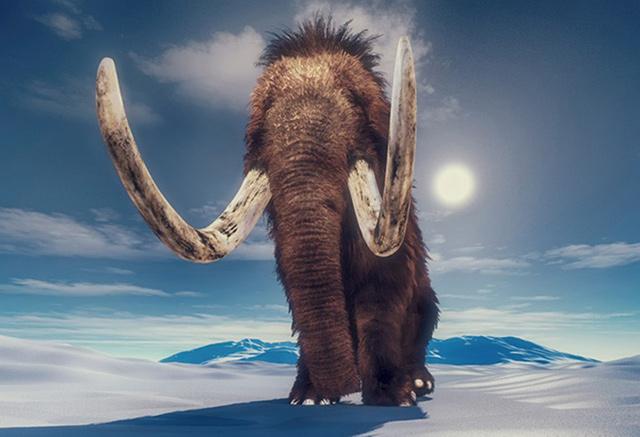You are here
Disappearance of wildflowers may have doomed Ice Age giants
By Reuters - Feb 06,2014 - Last updated at Feb 06,2014
WASHINGTON –– Flower power may have meant the difference between life and death for some of the extinct giants of the Ice Age, including the mighty woolly mammoth and woolly rhinoceros.
Scientists who studied DNA preserved in Arctic permafrost sediments and in the remains of such ancient animals have concluded that these Ice Age beasts relied heavily on the protein-rich wildflowers that once blanketed the region.
But dramatic Ice Age climate change caused a huge decline in these plants, leaving the Arctic covered instead in grasses and shrubs that lacked the same nutritional value and could not sustain the big herbivorous mammals, the scientists reported in the journal Nature on Wednesday.
The change in vegetation began roughly 25,000 years ago and ended about 10,000 years ago –– a time when many of the big animals slipped into extinction, the researchers said.
Scientists for years have been trying to figure out what caused this mass extinction, when two-thirds of all the large-bodied mammals in the Northern Hemisphere died out.
“Now we have, from my perspective at least, a very credible explanation,” Eske Willerslev of the University of Copenhagen, an expert in ancient DNA who led an international team of researchers, said in a telephone interview.
The findings contradicted the notion that humans arriving in these regions during the Ice Age caused the mass extinction by hunting the big animals into oblivion –– the so-called overkill or Blitzkrieg hypothesis.
“We think that the major driver (of the mass extinction) is not the humans,” Willerslev said, although he did not rule out that human hunters may have delivered the coup de grace to some species already diminished by the dwindling food supplies.
The Arctic region once teemed with herds of big animals, in some ways resembling an African savanna. Large plant eaters included woolly mammoths, woolly rhinos, horses, bison, reindeer and camels, with predators including hyenas, sabre-toothed cats, lions and huge short-faced bears.
The scientists carried out a 50,000-year history of the vegetation across the Arctic in Siberia and North America.
They obtained 242 permafrost sediment samples from various Arctic sites and studied the faces and stomach contents from the mummified remains of Ice Age animals recovered in places like Siberia. They determined the age of the samples and analysed the DNA.
While many scientists had thought the ecosystem had been grasslands and the big animals were grass eaters, this study showed it instead was dominated by a kind of plant known as forbs — essentially wildflowers.
“The whole Arctic ecosystem looked extremely different from today. You can imagine these enormous steppes with no trees, no shrubs, but dominated by these small flowering plants,” Willerslev said.
Christian Brochmann, a botanist at the Natural History Museum at the University of Oslo, said the permafrost contained “a vast, frozen DNA archive left as footprints from past ecosystems”, that could be deciphered by exploring animal and plant collections already stored in museums.
Related Articles
Teeth from mammoths buried in the Siberian permafrost for more than a million years have yielded the world's oldest DNA ever sequenced, according to a recently published study, shining the genetic searchlight into the deep past.
WASHINGTON — Woolly mammoths spent their lives enduring extreme Arctic conditions including frigid temperatures, an arid environment a
WASHINGTON — Walking the equivalent of twice around the world during a life lasting 28 years, one wooly mammoth whose steps have been traced


















